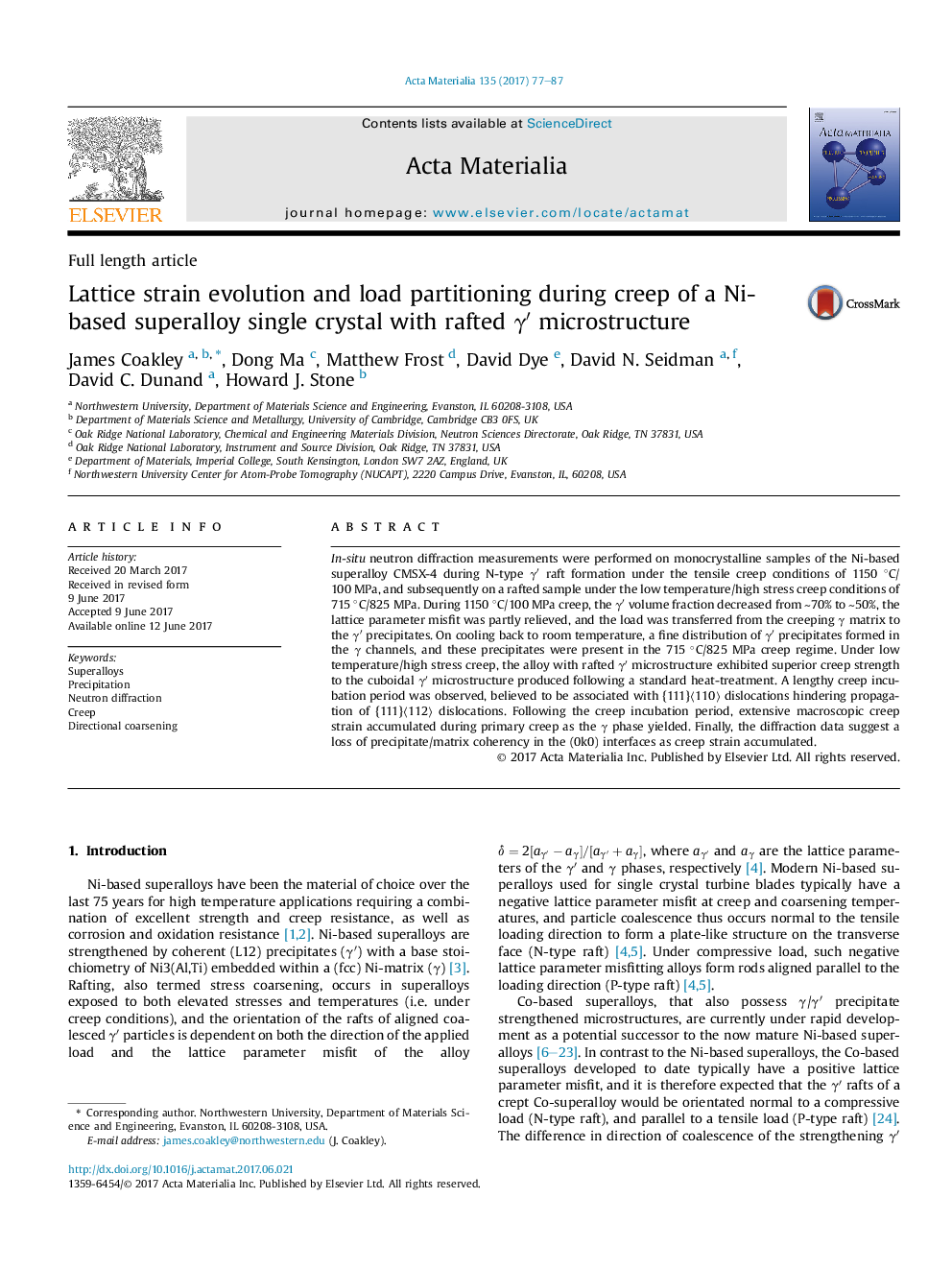| Article ID | Journal | Published Year | Pages | File Type |
|---|---|---|---|---|
| 5435896 | Acta Materialia | 2017 | 11 Pages |
In-situ neutron diffraction measurements were performed on monocrystalline samples of the Ni-based superalloy CMSX-4 during N-type γⲠraft formation under the tensile creep conditions of 1150 °C/100 MPa, and subsequently on a rafted sample under the low temperature/high stress creep conditions of 715 °C/825 MPa. During 1150 °C/100 MPa creep, the γⲠvolume fraction decreased from â¼70% to â¼50%, the lattice parameter misfit was partly relieved, and the load was transferred from the creeping γ matrix to the γⲠprecipitates. On cooling back to room temperature, a fine distribution of γⲠprecipitates formed in the γ channels, and these precipitates were present in the 715 °C/825 MPa creep regime. Under low temperature/high stress creep, the alloy with rafted γⲠmicrostructure exhibited superior creep strength to the cuboidal γⲠmicrostructure produced following a standard heat-treatment. A lengthy creep incubation period was observed, believed to be associated with {111}ã110ã dislocations hindering propagation of {111}ã112ã dislocations. Following the creep incubation period, extensive macroscopic creep strain accumulated during primary creep as the γ phase yielded. Finally, the diffraction data suggest a loss of precipitate/matrix coherency in the (0k0) interfaces as creep strain accumulated.
Graphical abstractDownload high-res image (280KB)Download full-size image
